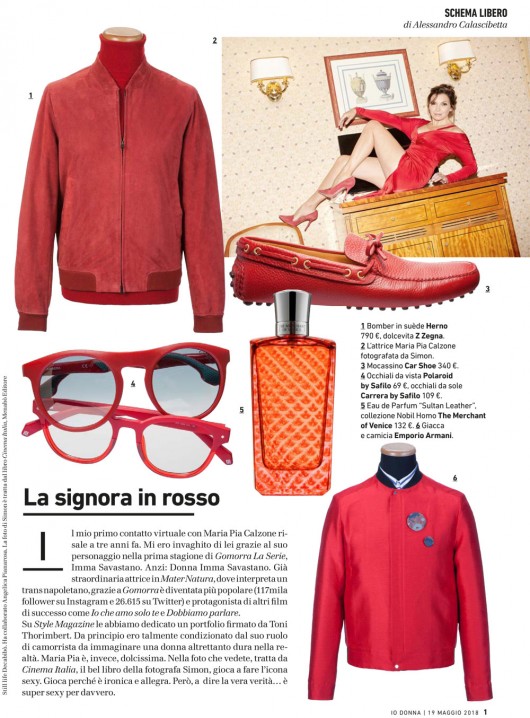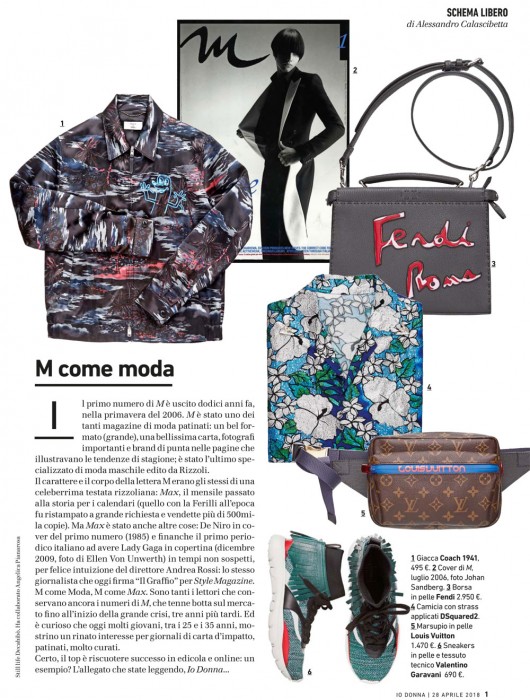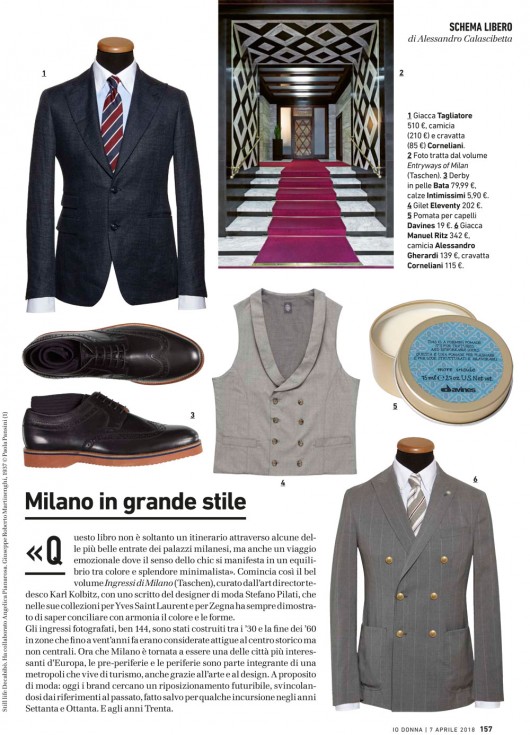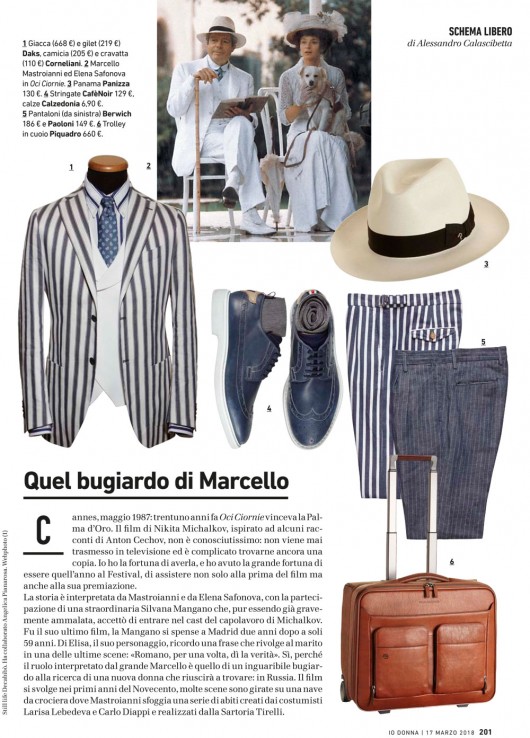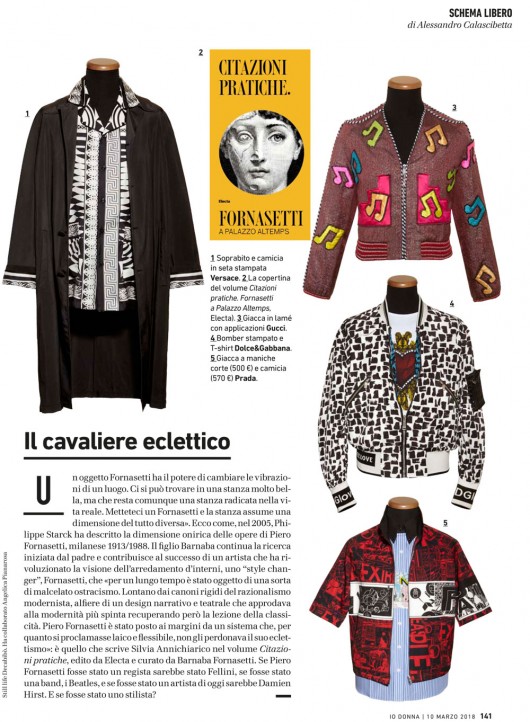IO DONNA SCHEMA LIBERO – LA SIGNORA IN ROSSO
The woman in red. My first virtual contact with Maria Pia Calzone was three years ago. I took a fancy to her thanks to her character in the first season of Gomorra the Series, Imma Savastano. She had already been great in Mater Natura, where she interpreted a Neapolitan transsexual, but thanks to Gomorra she has become more popular (117k followers on Instagram and 26615 on Twitter) and protagonist of other successful movies like Io che amo solo te and Dobbiamo parlare. Style Magazine dedicated to her a portfolio signed by Toni Thorimbert. At first I was so influenced by her camorrista character that I imagined a woman as tough in real life. But Maria Pia is really sweet, actually. In this picture, taken from Cinema Italia, the great book by the photographer Simon, she plays the role of the sexy icon. She plays, because she’s ironic and funny. But, to tell the truth, she’s sexy indeed.





